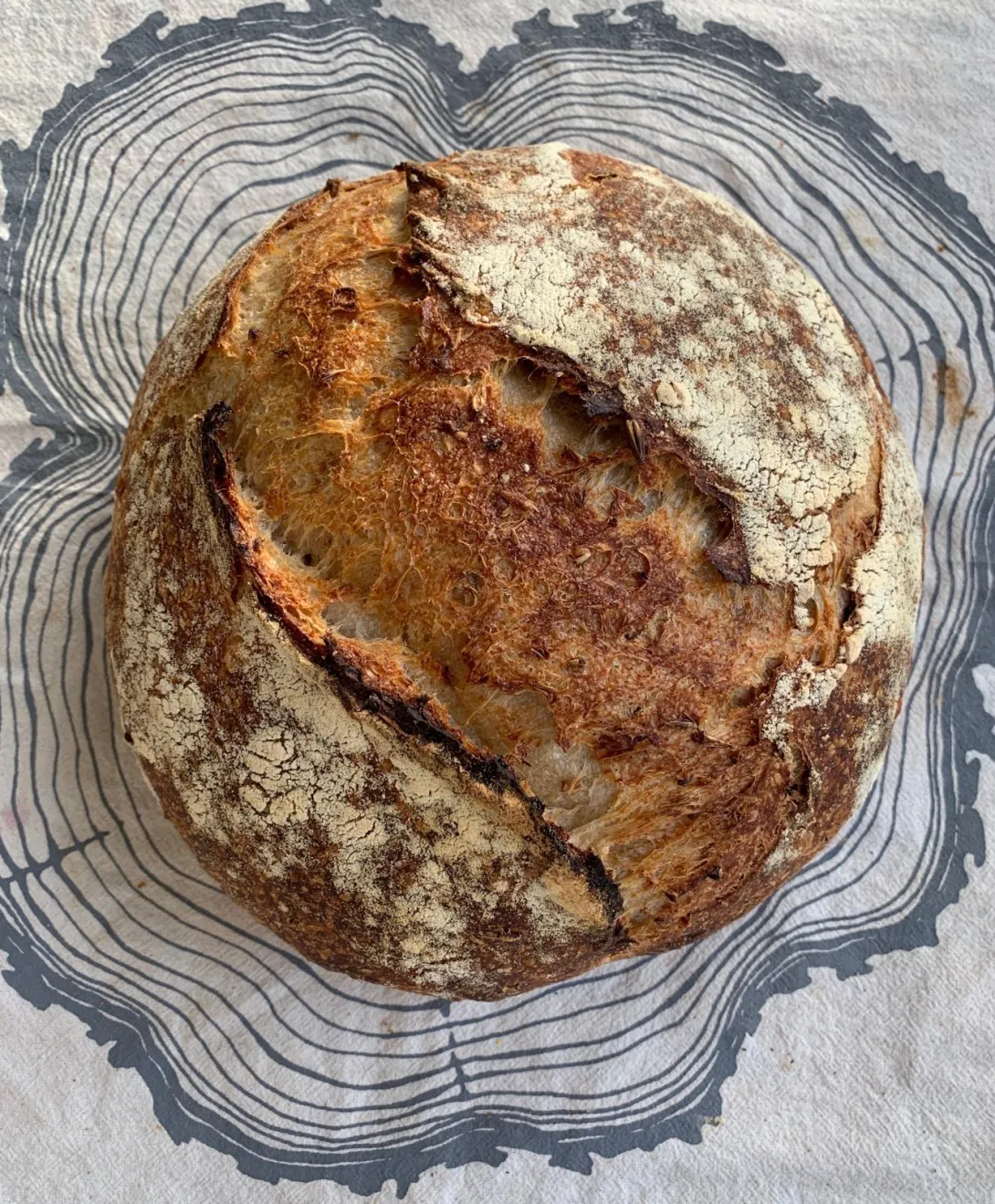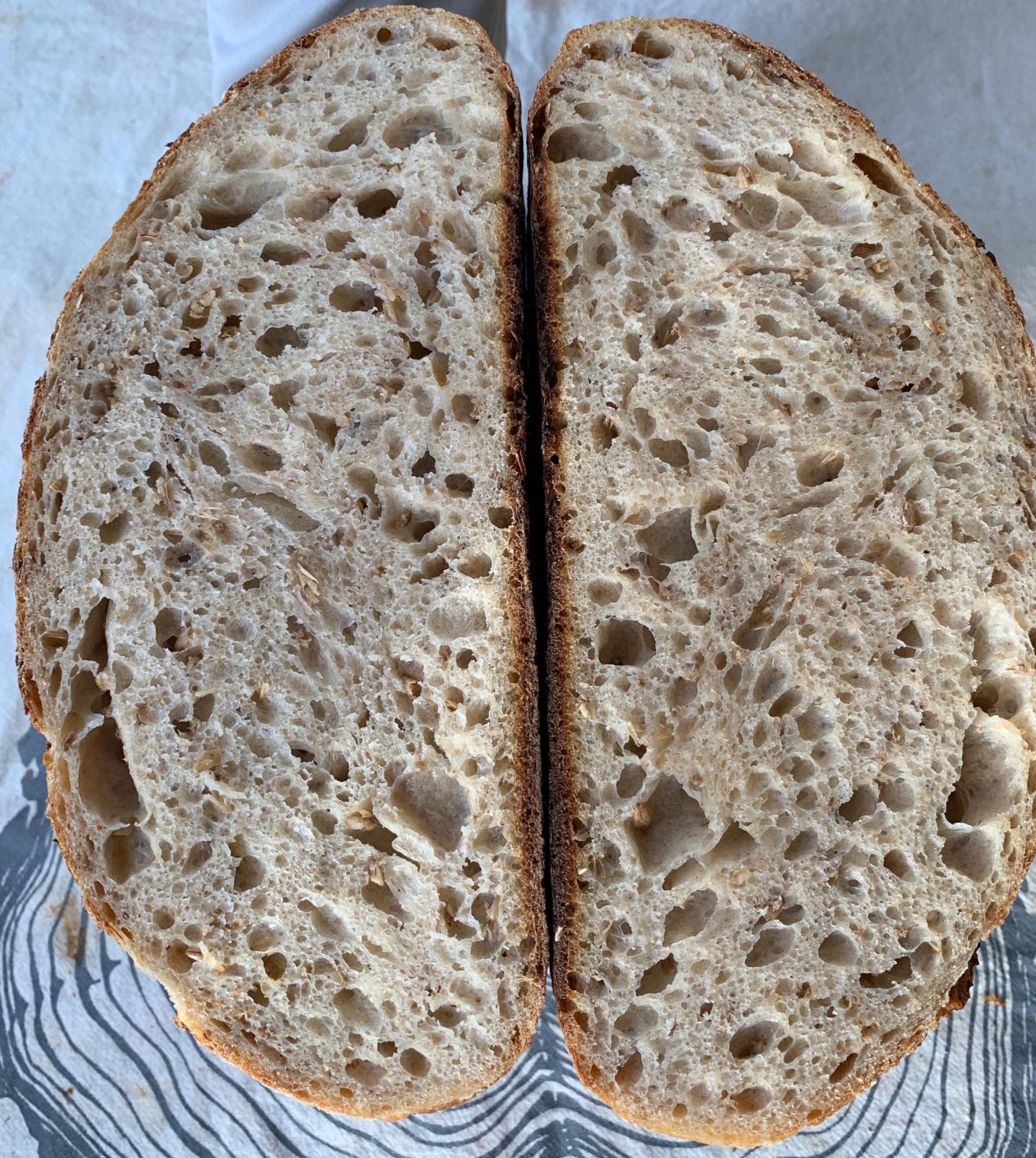
Hello Fresh Loaf Community,
This is my first post on the site after reading recipes and browsing for the past several months. I have been really inspired and impressed by all the amazing bread I have seen here on TFL and want to join the conversation.
The loaf was made using spent beer grains obtained from Somerville Brewing (Boston, MA) and naturally leavened thanks to Stefano, my sourdough starter.
A few months ago, I took a bread making class at the brewery where one of the owners lead us through making a spent grain loaf with rosemary. That was tasty, but I wanted to improve the results using my starter. After taking some spent grain home and finding a great recipe on The Perfect Loaf (thanks Maurizio!) I began experimenting.
During the beer making process, the grain is mashed, boiled, then separated from the liquid. The byproduct, "spent grain," is either thrown away of fed to farm animals. Instead of letting it go to waste, this batch of grain will instead go to feeding this animal, aka me, and feed my voracious appetite for artisan bread. With that in mind, baking with the spent grains gives me a deep satisfaction knowing that I'm putting something to practical use which would normally get thrown in the bin.
I was pretty pleased with the crumb, which turned out light and airy, while maintaining a tender, chewy texture. This was a moderate hydration dough (80%) that produced a pretty light loaf. It had a nice nutty flavor from the grain, similar in character to a loaf with lots of whole whole wheat, but without any bitterness. Lately, I have been working on getting a consistent airy crumb with good rise and pronounced ears. This loaf seemed to have all three. Horray!

Here's how I made the loaf:
Yields 2 large loaves.
1. Levain build: 50 g starter, 50g whole wheat (WW), 50 g bread flour (BF), 65 g 90˚ F water. Let stand for ~5 hours in a warm area.
2. Autolyse 2 hours before levain is ready: 100 g WW, 50 g rye, 850 g BF, 700 g 90˚ F water
3. Mix: Dissolve starter in ~60 g water then add to autolysed dough. Slap and fold for about 7 minutes then add about 20 g salt and slap/fold a few more minutes to achieve medium dough development.
4. In 30 minutes increments, fold the dough a few times. Add 250 g spent grain right before the second round of folding. I found my dough needed 3 sets of folds, your dough might need less or more depending on the efficiency of your slap & folds after mixing.
5. I let bulk fermentation go for about 3 hours, since the dough was progressing nicely. I let the dough sit for an hour after my last set of folds.
6. Divide and preshape. Let sit for 20 minutes after preshape and before final shaping. Then into the fridge for the overnight rest.
7. The next day, preheated the oven to 500˚ F for about 45 minutes with my lodge combo cooker. I turned my dough into the shallow side, scored it, then baked with the lid on for 30 min, then removed the lid and decreased the temperature to 450˚ F for another 15 minutes.
Happy baking everyone,
-RR
- Rustic Rye's Blog
- Log in or register to post comments
inside and out. Clever to use spent grain, taste must have been wonderful.
Congratulations and keep on baking!
Carole
First of all I want to say WELCOME to the Fresh Loaf. Secondly, you've done a fantastic job. How long have you been baking bread? marybeth
Hey Marybeth!
Thanks for the warm welcome. I've been baking for about a year now. How about you? It's so much fun to experiment with all sorts of different projects where flour inevitably ends up all over me. haha.
I would be very pleased to pull something like that out of my oven. Well done !
I have made your formula a few times with interesting results. When I try to preshape and then do a final shape, the dough is still very wet and I am concerned that in order to do the shaping as I normally do, I would have to add a lot of extra flour. As a result, I line the banneton with a thin plastic bag from the produce section of the supermarket. That keeps the dough from sticking to the banneton and still removes easily the next morning when I take it out of the fridge. That leads me to wonder about the spent grain itself. I have been able to get it directly from a brewer and it is still wet from the mash, perhaps 100% hydration. Is yours this wet or has it been dried before adding to the dough. I was wondering about reducing the initial water in the dough by 50 to 100 grams, to compensate for the moisture in the spent grains. Any thoughts? Thanks